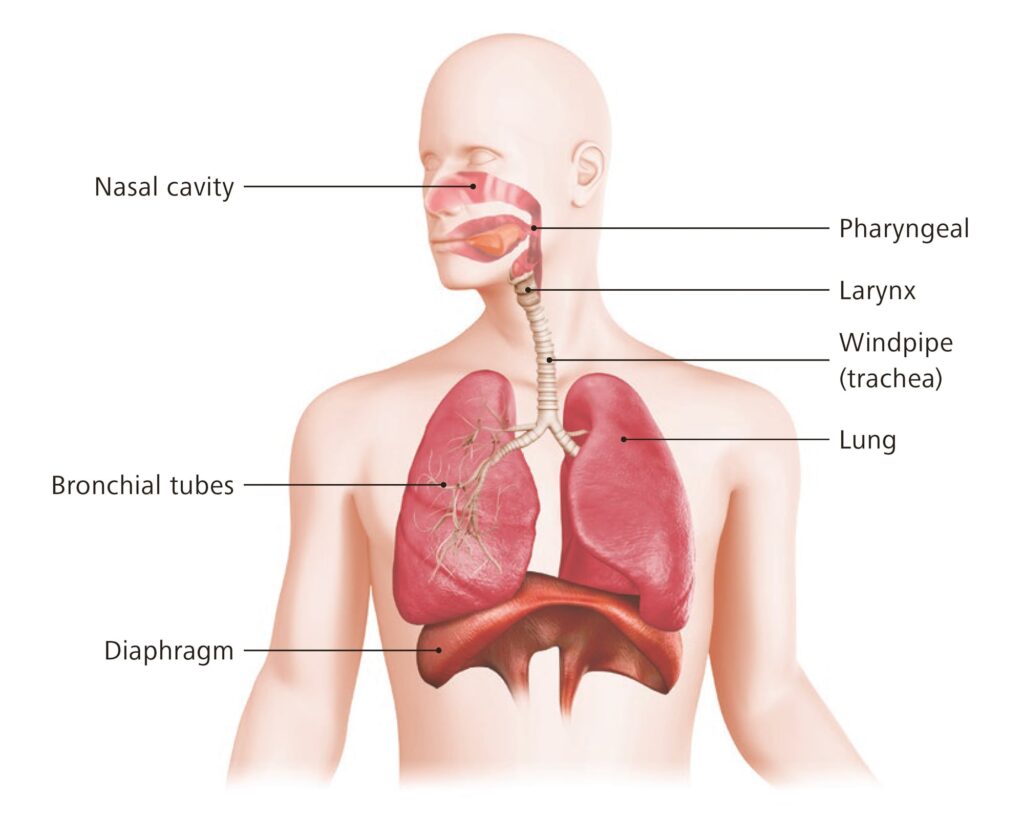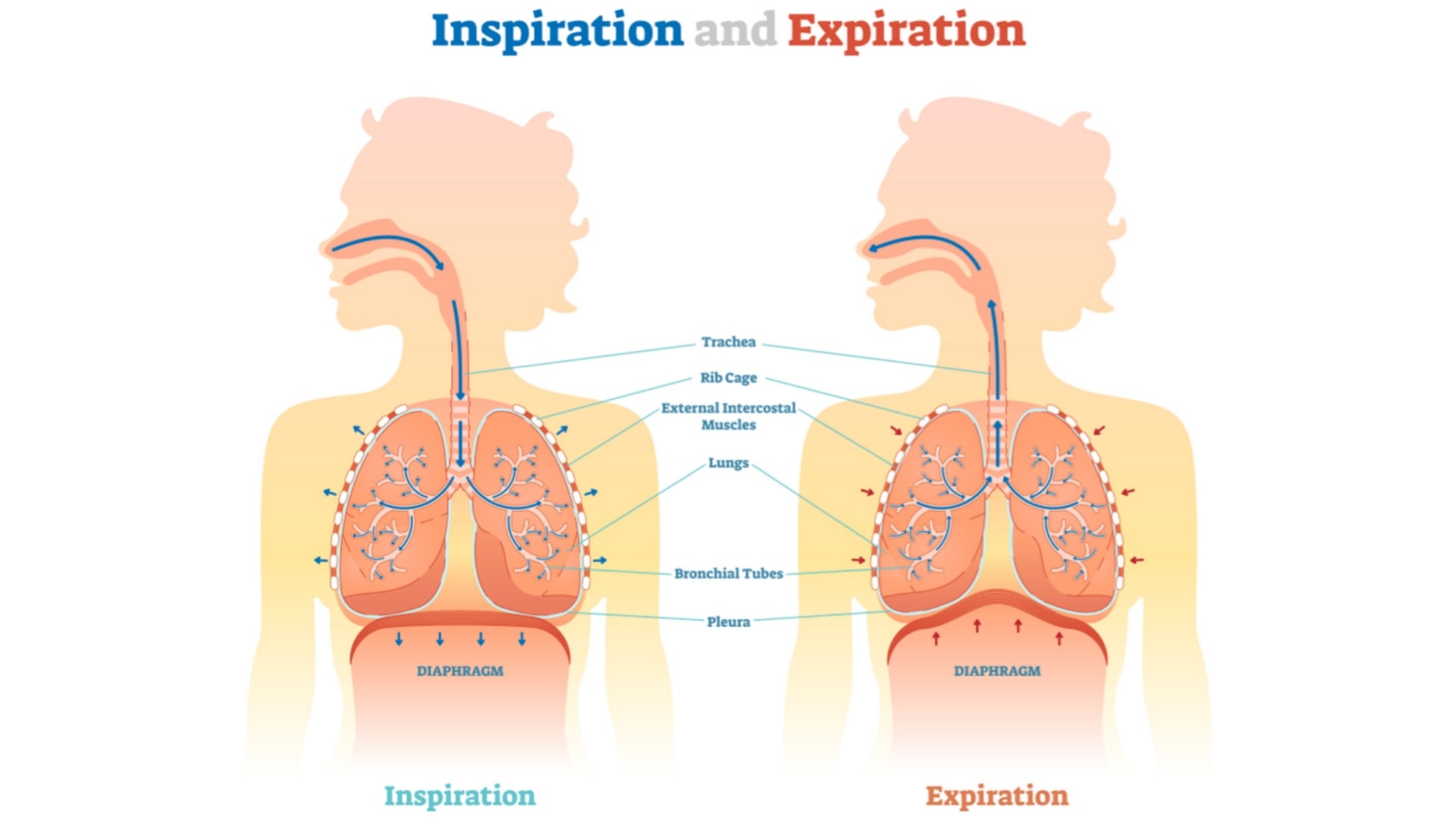The mechanism of respiration involves the breathing mechanism and exchange of gases. The gaseous exchange occurs by diffusion in the alveoli. It depends upon the pressure differences between blood and tissues, or atmospheric air and blood.

Inspiration
↓
Fresh air
↓
Inhalation nostrils to lungs
↓
Alveoli O2 Diffuses into blood capillaries
↓
Blood O2 Binds to hemoglobin
↓
Transported to cells
↓
O2 Diffuses out into tissue fluid from the blood
↓
O2 diffuses into cells
↓
Oxidation of food glucose + O2
Co2 +H2O
↓
Co2 Diffused out into tissue fluid
↓
Co2 taken up by the blood
↓
Transported to lungs
↓
Exhalation Co2 pushed out from nostrils to out in the environment
↓
Expiration
Mechanism of respiration:
The cycle of respiration consists of three phases inspiration, expiration, and pause.
- Inspiration or inhalation is breathing in, after expiration and before inspiration, there is a pause phase, where the air pressure inside the lungs equals the atmospheric pressure i.e. 760mm Hg. Now for inspiration, the air inside the lungs must reduce down below the atmospheric pressure and this is achieved by the expansion of the lungs.
- The process of expiration is passive and no muscle contraction is involved. The expiration or exhalation is achieved through the pressure gradient. As the pressure of the gases inside the lungs increases above the atmospheric pressure the gases are passively expelled out.
- The expansion of the chest during inspiration and going back again the normal during expiration is achieved with the help of intercostal muscles.
- 11 pairs of intercostal muscles occupy the space between the 12 pairs of ribs. They are of two types:
- The external intercostal muscles: These extend downward and forward,
- The internal intercostal muscles: These extend downwards and backward When the intercostal muscles contract the ribs are pulled upwards towards the first rib which is non-moving or fixed. Due to the uplifting, the ribs expand in the forward direction leading to expansion of the chest cavity.
- The intercostal muscles are stimulated to contract by the intercostal nerves
- The diaphragm is a dome-shaped scar structure separating the thoracic and the abdominal cavities it forms the floor of the thoracic cavity and roof of the abdominal cavity.
- It consists of a central and attained to the lower ribs and the sternum. when the muscle of the diaphragm is contracted the muscle fibers shorten and the central tendon is pulled downwards to the level of the 9th thoracic vertebrae enlarging the thoracic cavity.
- The diaphragm is supplied with the phrenic nerves.
| QUESTION BANK 1. Explain in detail the mechanism of respiration. (10M) |
Make sure you also check our other amazing Article on : Movements of Small Intestine
